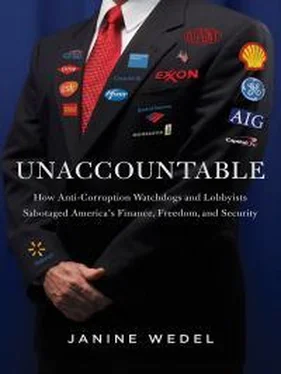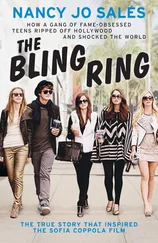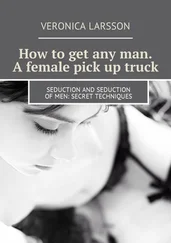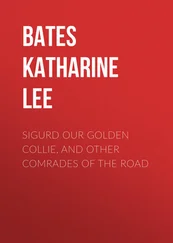Exum, as we have seen, is far from alone. When quizzed about conflict of interest, many powerful players insist that unless you have the goods to back up a conflict-of-interest question, you shouldn’t even float it. They use this all-purpose line: good intentions, as perceived by the players themselves, trump everything and should inoculate them from inquiry.
The fact remains that for those inside the bubble, developing near or outright friendships with the people they cover, good faith deserves to be questioned. Often we are unaware of how much our conflicts dictate our judgment. As journalist Hodge astutely observes: 58
This is how the Beltway consensus is built: not through some crude pay-for-play but through the subtle reinforcement of conventional wisdom. If the experience of Iraq taught us anything, though, it’s that reporters need to maintain an adversarial relationship with the people who are helping to craft policy.
The journalistic gloves didn’t really come off on the COINdinistas until Petraeus’s affair of the heart was revealed, which happened after a groundswell of criticism in Washington military and policy circles holding that COIN was failing in Afghanistan. Media outlets began to see that the true seduction had been of the media itself: according to Boston Globe columnist Joan Vennochi, 59
[The media are in] deep mourning over the passing of Petraeus from fawned-over military genius to disgraced ex-CIA director. As they dish the latest Petraeus dirt, TV anchors and commentators shake their heads sadly over the affair that brought down the man who always answered their e-mail.
The New Yorker ’s Jon Lee Anderson: “He was an exceptional military officer, and he helped steer a turnaround in what had been a hopeless, bloody mess of a war in Iraq. But his lionization by admiring and opportunistic politicians and fawning journalists and biographers—such as Paula Broadwell, the woman he was involved with—has been craven and boundless.” 60
What warrants our attention is not the sensation of the Petraeus-Broadwell saga, but the blooming of a much more complex beast—in this case, the think–tank-industry-government-media nexus. These institutions have undergone seismic changes, with porous and blurred boundaries. The constellation they form is largely beyond our accountability.
The nexus is clearly alive and well. Soon after Petraeus’s outing, the COINdinistas recognized that even if COIN might have “worked” in Iraq, budget realities were not going to support the expensive vision of decades of engagement in Afghanistan. 61As they look for the next hot issues, the players continue to amass and reward the best and brightest among young thinkers in defense and related areas. 62

CNAS does not appear to be part of a broader network of like-minded organizations, but that was not the case for the Republican defense establishment that preceded it.
Beginning in the 1980s, proponents of the “Star Wars” Strategic Defense Initiative set up or mobilized several pressure organizations to influence the opinion of decisionmakers, helping to keep missile defense alive after the end of the Cold War. And think tanks, along with so-called “letterhead organizations,” helped buttress the dozen or so players I call the Neocon Core, who helped push the U.S. to war in Iraq in 2003. 63
The Neocon Core used a web of interlocking memberships in these think tanks to help generate buzz and give the veneer of scholarly disinterest and neutrality to policy pronouncements that in reality were serving the ideological interests of the players agitating for war. 64And it went farther than that. Their experts, true neoconservative believers affiliated with their think tanks, were brought in to populate secret offices in the Pentagon. These offices were set up to supplant the government’s intelligence-gathering and analysis with their own version of the Iraq threat, a version that served the neoconservative goal of invading Iraq, but was at odds with much other intelligence gathered and did not reflect the facts on the ground. 65
Next we’ll look at how social networks that surge and coalesce around think tanks amid a governing and policy vacuum—the ruins of communism—can wield influence beyond accountability, for better as well as for worse.
ERSATZ GOVERNING?
The supreme case involves George Soros, the Hungarian-American billionaire, hedge-fund magnate, and global philanthropist. Having headed the most successful hedge fund in history for thirty years until 2000, Soros embodies “almost mythical status as a market player, influencer, and commentator,” as Paul Stubbs, a sociologist long based in Zagreb, Croatia, who has seen Soros’s operations up close, puts it. 66Through his web of Open Society Institutes and Foundations, beginning in the early 1990s, Soros has supported an important and unusual series of entities, first in Central and Eastern Europe, and later with near global reach. And while most of them are not, strictly speaking, think tanks, some have served as a springboard for elite networks—sometimes shadow elites—to make policy and to set up organizations explicitly called think tanks. Toward that end, in recent years, Soros created a Think Tank Fund that provides institutional backing to certain think tanks and supports specific programs. 67
Soros’s projects have contributed immeasurably to the region—from fostering intellectual capital to specific programs benefiting thousands of people. Still, the Soros Empire, as it has been called, provides a case study in how politics (and society) can be fashioned, and even de facto governing accomplished, through entities whose MO and networks exhibit informality, flexibility, and ad-hoc-ery—offering up certain challenges to accountability.
Stubbs, upon whose research and writing this section is drawn, casts a critical eye on the enterprise, as do several other scholar-observers here referenced. 68And I, myself, encountered Soros-originated institutes and foundations through my many years based in Poland and my studies of foreign aid to Central and Eastern Europe.
First, some background. Soros ventured into philanthropy beginning in the late 1970s. His initial substantial commitment was to back dissident groups in communist Eastern Europe during the 1980s. He helped bankroll the NGO Helsinki Watch (later Human Rights Watch) and also funded projects such as universities’ purchase of photocopy machines so they could circulate literature outside state control. 69When the Berlin Wall fell, Soros launched the Open Society Institute (OSI), with offices in both New York and Budapest. In 1993, national Open Society Foundations were set up in most post-communist countries of Central and Eastern Europe, and in the former Soviet Union soon afterwards.
Soros’s broad vision was “to promote open societies by shaping national and international policies with knowledge and expertise,” as political scientist Diane Stone has written. 70(The “open society” concept comes from the philosopher Karl Popper, his onetime professor.) His foundations and their networks have sought to advance progressive social agendas—promoting democracy, human rights, and civil society—with initiatives ranging from supporting independent media to the rights of women, gays, and Roma.
But what, exactly, is the Soros Empire? 71It is neither fish nor fowl, exhibiting some of the characteristics usually associated with transnational expertized networks, global public-policy networks, transnational advocacy networks, and international knowledge networks, as Stone, who was affiliated with a Hungarian Soros-sponsored university and has investigated policy networks and philanthropy, has written. 72
Читать дальше













